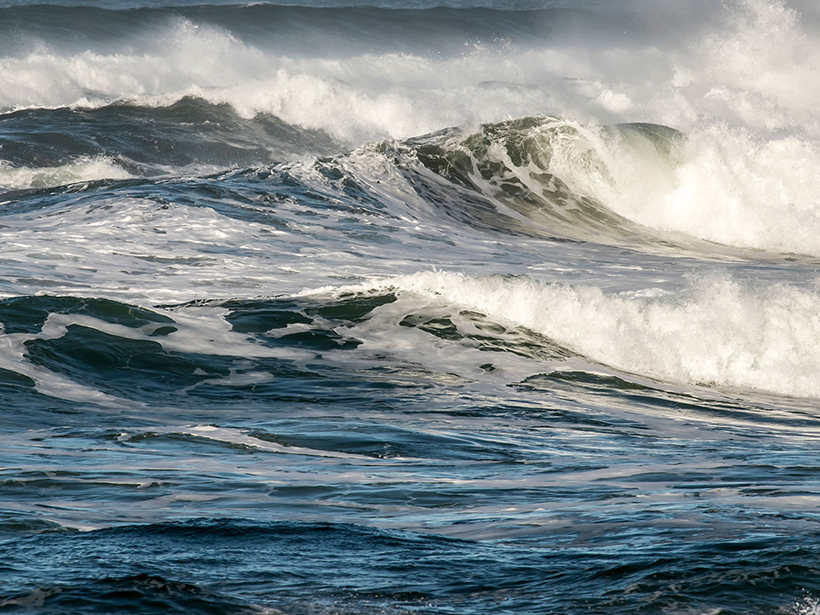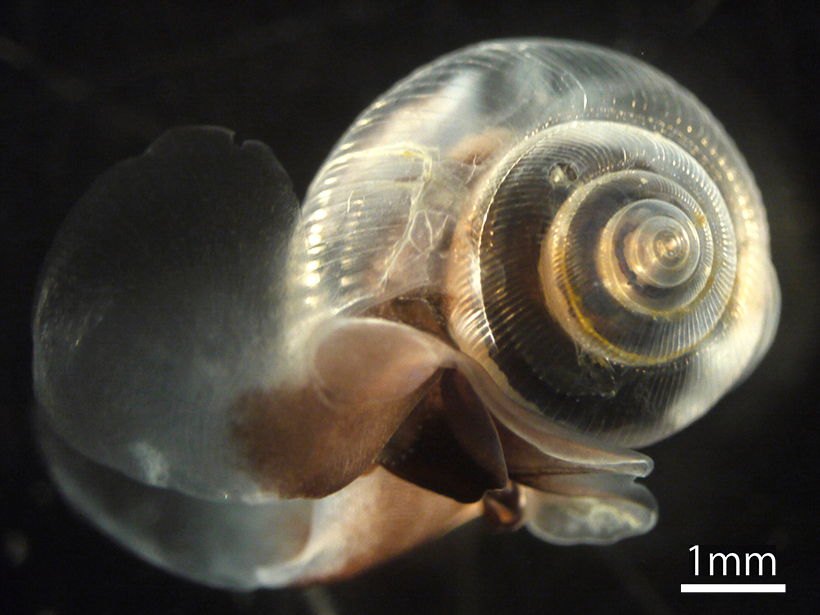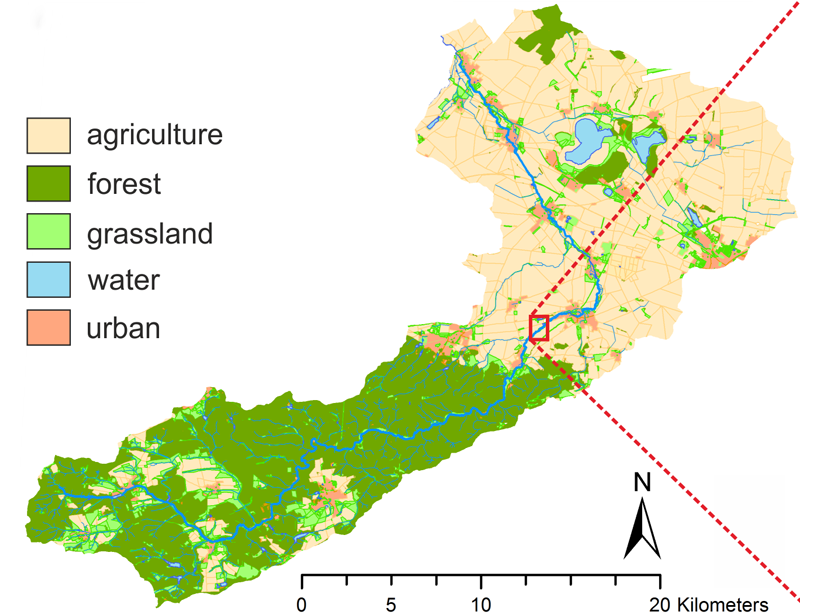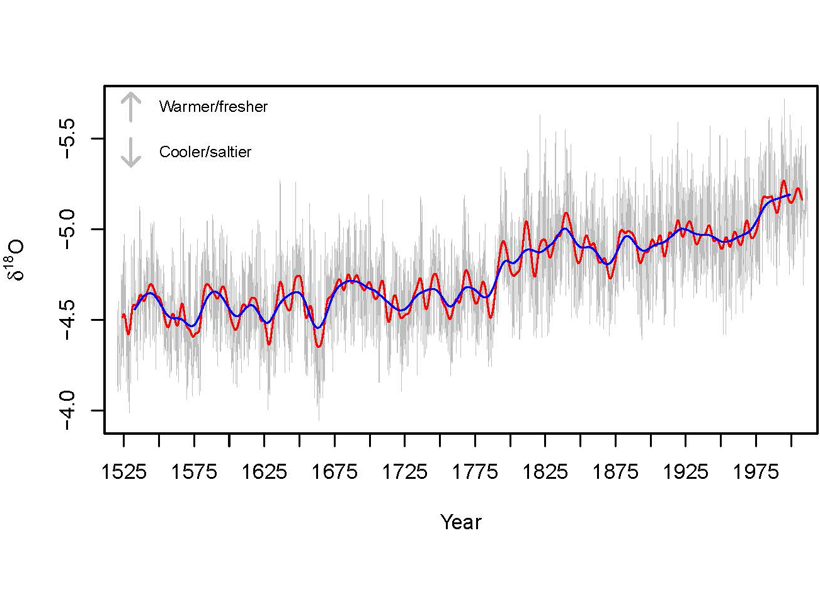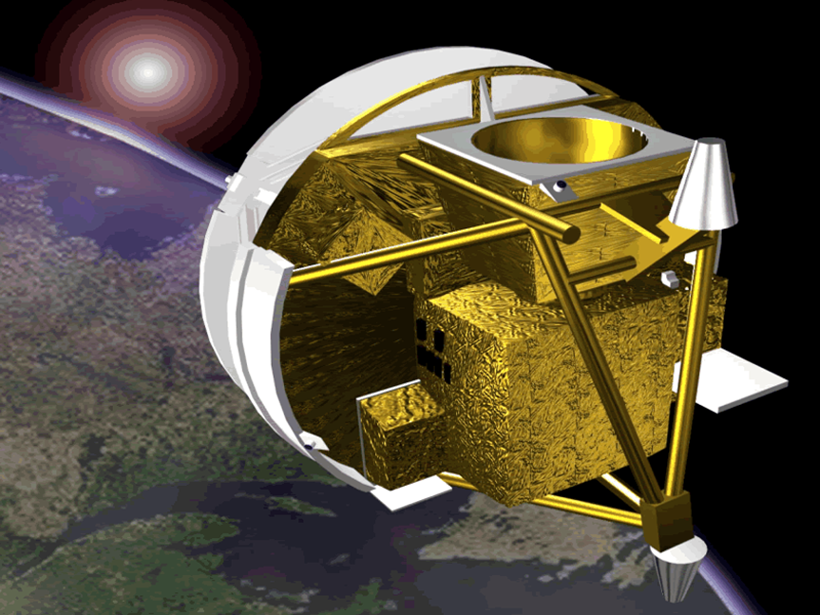Un nuevo registro de isótopos de boro proveniente de sedimentos marinos del Pacifico Sur, ofrece una imagen más completa del intercambio de dióxido de carbono entre el océano y la atmósfera durante el Pleistoceno tardío.
isotopes
Meteoric 10Be Reveals Lithological Control on Erosion Rates
New meteoric 10Be data quantify fast erosion of slates in the Zhuoshui River catchment in Taiwan and demonstrate the influence of lithology on landscape steepness.
Arctic Plankton Populations Vary by Season
Planktonic foraminifera and sea snail numbers swell from April to June in the Barents Sea, but contrary to predictions, the organisms do not appear to be affected directly by high methane levels.
New Isotope Model Predicts Denitrification from Riparian Zones
A new model quantifies the relative contributions of denitrification and other processes of nitrogen uptake, such as by plants, from groundwater in riparian areas around streams.
Oceans Vented Carbon Dioxide During the Last Deglaciation
A new boron isotope record from South Pacific marine sediments offers a more complete picture of ocean-atmosphere carbon dioxide exchange during the late Pleistocene.
Ancient Water Underlies Arid Egypt
A hidden trove of groundwater is left over from the last ice age.
What American Samoan Corals Tell About El Niño’s History
Samoan corals record how patterns of warm/cool and more/less salty in the equatorial Pacific changed in space and time over the last 500 years.
How Ice Rafting Events Affect Asian Monsoon Hydroclimate
Cave stalagmites provide isotopic evidence that Bond events and Heinrich events have more variable effects on Asian monsoon hydroclimate during the last glacial period than during the Holocene.
First Near-Global Measurements of Isotopic Nitrous Oxide
By harnessing satellite data collected from low-Earth orbit, scientists can now track the distribution of atmospheric nitrous oxide and its isotopes.
Cerling and Ehleringer Receive 2017 Excellence in Earth and Space Science Education Award
Thure Cerling and James Ehleringer received the 2017 Excellence in Earth and Space Science Education Award at the American Geophysical Union Fall Meeting Honors Ceremony, held on 13 December 2017 in New Orleans, La. The award honors “a sustained commitment to excellence in geophysical education by a team, individual, or group.”

